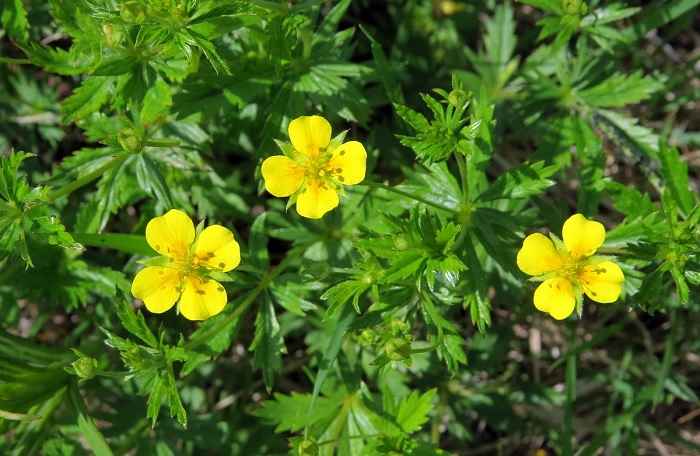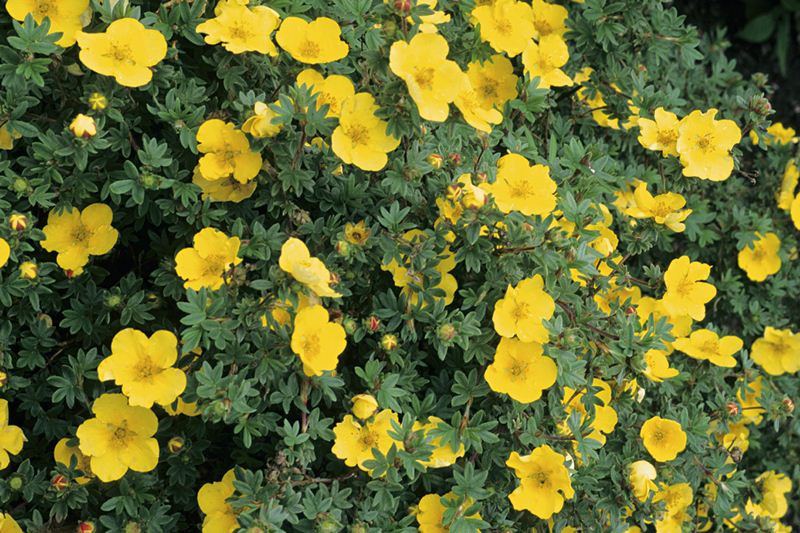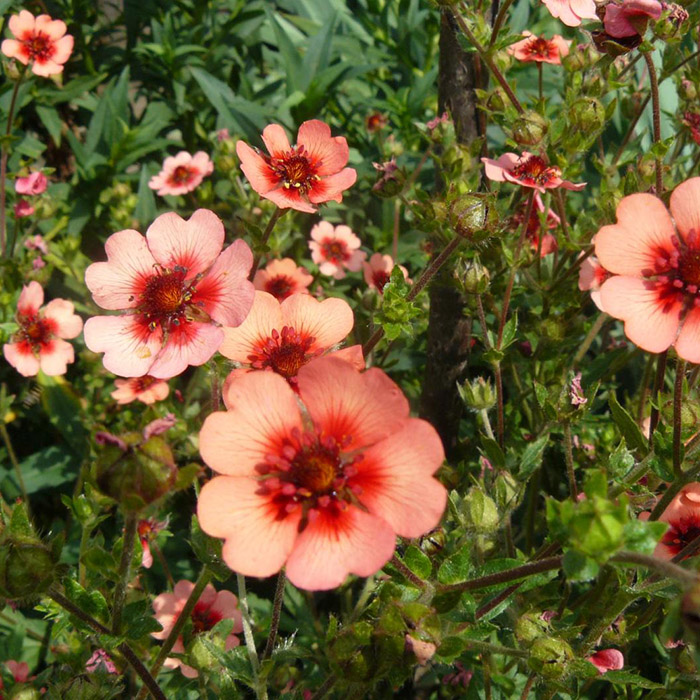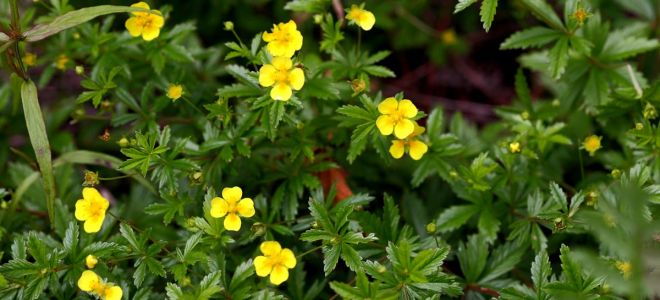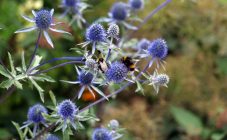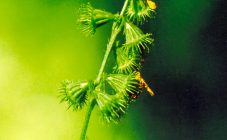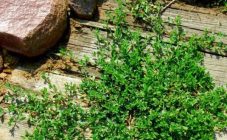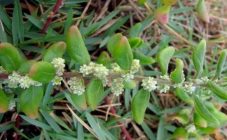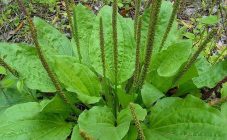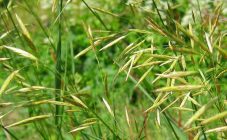Content:
Kalgan (sometimes there is a wrong spelling "Kolgan") is an herb that has long been known as an excellent remedy for many diseases of the intestinal tract. This herb is superior to modern drugs such as aspirin or penicillin in its therapeutic effect.
Description
Another well-known name for the herb galangal, commonly used by amateur gardeners in common parlance, is wild cinquefoil. In appearance, this culture should look like a densely overgrown flower bush with bright red-yellow inflorescences, the smell of which can only be compared with the scent of roses. Its base is a horizontally growing thick root, crushing into countless small roots.
Above the rhizome rises a straight and slightly leafy thick stem, approximately 25-50 centimeters high. The flowering of this variety of medicinal herbs lasts almost the entire season (from late May to early September). Its fruits ripen by mid-summer, about 3 weeks after the beginning of flowering.
The description of the culture is complemented by delicate flowers growing on relatively long pedicels, abundantly covering the overgrown branches.
It is also known that this variety has more than one name, namely: Dubrovka, elm grass, goose foot, worm and others.
Where does galangal grass grow? These are mainly the Caucasus, the Urals and Siberia.
Often, the galangal, similar to rose bushes, grows in high-mountainous regions (most often on rocky cliffs).
Types and methods of reproduction
There are at least 150 types of Potentilla in Russia, but the most common are the following:
- Kuril tea.
- Kalgan erect wild.
- Duchenei Nepalese (other names for the herb are Indian, soil-blooded, stemless).
Kuril tea (it can also be called a five-leafed leaf) is about a meter long shrub with leaves that are soft to the touch and beautiful white or yellow flowers. The fruits of the five-leafed leaf at maturity look like small buttons of a red-brown hue.
Various types of duchenei (it is commonly called false strawberry) are perennial plants that cover the area with a continuous grassy carpet. Their berries are bright red; after flowering, they form small fruits of a ruby hue.
It differs from other varieties of galangal in a rather thick rhizome and nothing in the unique aroma of its flowers.
This plant propagates by traditional methods: seeds for seedlings, dividing the bush, cuttings and small layering. Features of each of these methods in more detail:
- Galangal grass seeds are harvested at the end of the summer season, and you can start sowing them the next year.
- For reproduction by the method of division, bushes are selected on which sprout buds have tied (this method is suitable for any growing season).
- Cutting should be done immediately with the arrival of summer heat, having pre-cut the blanks from last year's growth.
- Cultivation by layering is the simplest and most effective way of breeding galangal, which is very popular among amateur gardeners.
To implement it, it is enough to choose the shoot you like, cut it carefully with a knife, and then gently bend it to the ground. The place of the incision should be fixed with a pre-prepared hairpin, and then carefully sprinkle with soil. Immediately after the bent layering has its own roots, it is transplanted to a new place.
Fertile and well-loosened soils are best suited for growing galangal (their optimal composition is loam with the addition of sand and lime). The best time to plant this herb in the garden is early spring.
Useful properties of the plant
Kalgan is used as a medicinal herb, tinctures of which help to get rid of most diseases of the gastrointestinal tract, including gastritis, colitis and even ulcers.
In addition, a medicinal infusion from it is used in the treatment of liver abnormalities, lungs, as well as throat and ears.
External use of herbs of this variety is indicated for the development of skin diseases, including the formation of cracks, weeping eczema, as well as various fungal pathologies, burns and other inflammatory processes.
In addition, its seeds can be useful in treating common diseases such as malaria and cholera.
Diseases and pests
The most dangerous diseases that can affect this beneficial type of grass are rust and leaf spot. The likelihood of getting sick with them increases if the summer is too cold or hot.
With rust on the leaves of Potentilla, spots of a brown-yellow color appear with a clearly visible purple tint. At the same time, a large number of disputes are formed on their reverse side. They pose the greatest threat to plants, since they are easily carried by air currents and can infect other bushes and crops.
From this ailment, special foliar dressings, which include manganese and boron, help a lot. A good effect can be achieved if the bushes are periodically sprayed with a pre-prepared solution based on a mixture of sulfur and copper.
The development of the second of these diseases is clearly noticeable by the appearance of multi-colored spots (brown, gray, yellow or slightly reddish) on the leaves. Its cause is highly dry air, as well as a lack of light and fertilizers. To eliminate the consequences, all affected plant branches are removed, and the rest are treated with fungicides.
In hot and dry weather, the grass is threatened by spider mites, which can be eliminated by wiping the back of the leaves with adhering cobwebs with a damp cloth.
Collection and storage
A useful medicinal infusion is made from the rhizome of galangal, which is dug out after the dried out ground part dies off. They are usually collected in late autumn (approximately September - October months).
Upon completion of the collection, the excavated rhizomes are thoroughly cleaned of the earth, and then washed and carefully scraped with a well-sharpened knife. After that, the already cleaned raw materials are cut into small particles, and then placed in a shaded and well-ventilated place to dry.
When harvesting a plant, sometimes the so-called "fast" drying using forced ventilation is used (in this case, more nutrients are stored in the roots).
The shelf life of the harvested medicinal root is on average about 4 years.
Dried galangal has one specific property - it has a subtle aromatic smell.
Thus, galangal herb is a medicinal plant that can help in the treatment of many diseases, it is important to follow the rules of collection and storage.
